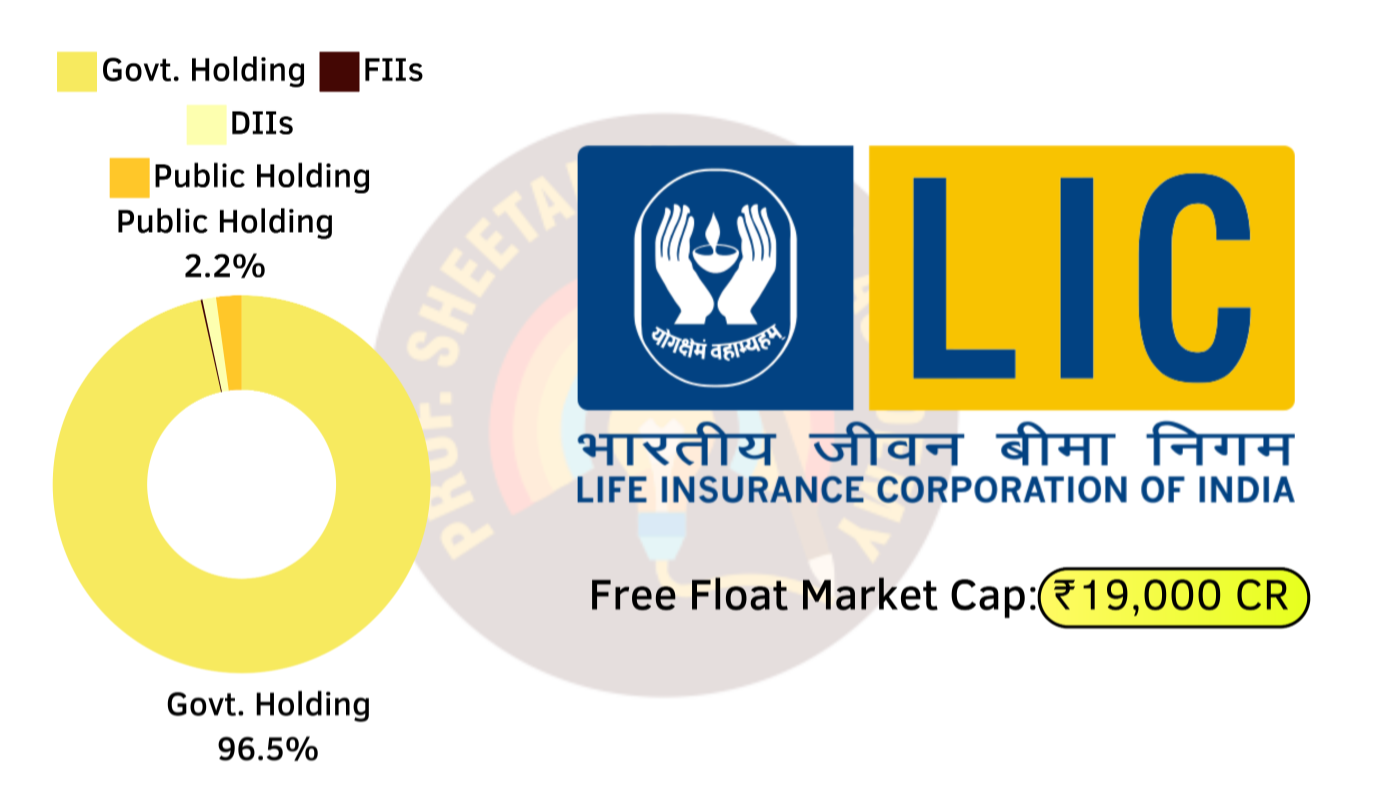Today we'll cover the concept building of the second day of 50 Days Finance Challenge.
Today we have come up with an important topic - Full Market Capitalisation vs Free Float Market Capitalisation.
If you have not seen our detailed video of market cap, then watch it, so that this concept will be clearer.
Let us first understand the meaning of Full Market Capitalisation. We also call it Market capitalisation, which we learned in the previous video.
Full market capitalisation is the value of the total outstanding shares of a company, which includes shares of promoters, institutions, and retail investors. So Full Market Cap shows the total size of the company in the stock market.

For example, take Reliance Industries. As of today, the total outstanding shares of Reliance are around 1350 crore, and the share price is ₹1330. If we multiply it, then the Market Cap is more than ₹18 lakh crore! This shows the total value of all the shares of the company.
But Free Float Market Capitalisation shows the value of only those shares which are available for public trading, i.e. those held by promoters, government or large institutional investors are excluded. Because the bigger the stake they have, the more shares they have to sell or buy through block deal or bulk deal.
But only those shares which can be freely traded are counted in the Free Float Market Cap.
For example, in Reliance Industries, the promoters group owns about 50% of the shares. So while calculating the Free Float Market Cap, we will take only those 50% shares which are available for trading with the public. If those shares are around 625 crore, then the Free Float Market Cap will be around ₹9 lakh crore, which is significantly less than the Full Market Cap.
Now you must be wondering why it is important to see the Free Float Market Cap? So many stock indices, such as Nifty 50 and Sensex, use Free Float Market Cap to decide which companies to include in the index. This metric accurately measures liquidity and trading potential, and shows investors the actual market value that is available for trading.
Let us now take the example of three companies and see the difference between their Full Market Cap and Free Float Market Cap.
The first company is TCS, which is a large IT company in India. Tata Group, which is the promoter, holds around 72% of the shares. So, even though the Full Market Cap of TCS is around ₹15.5 lakh crore, the Free Float Market Cap is much lower, around ₹4.35 lakh crore. This big difference shows that most of the shares are not freely available to trade in the market. But still the figure of ₹4.35 lakh crore is quite big and that is why this company is included in Nifty 50 and Sensex.
Now let's talk about ITC, which is a big FMCG company in India. The promoters' holding in ITC is very low, around 29%. This means that ITC's Free Float percentage is higher than TCS. ITC's Full Market Cap is around ₹6.45 lakh crore, but the Free Float Market Cap is around ₹4.75 lakh crore, due to which more shares are available to the public and liquidity is high. And this company is also a part of Sensex and Nifty.

Now let's take another interesting example of HDFC Bank. It is India's largest banking company in terms of market cap and its promoter holding is less than 1%.
Yes, this is surprising! There are many such companies in India whose promoter holding is zero and these are professionally managed companies, such as BSE Ltd, ICICI Bank, L&T, Zomato, PB Fintech (Policy Bazaar), Federal Bank, etc. So the Full Market Cap of HDFC Bank is around ₹13.30 lakh crore, while the Free Float Market Cap is around ₹13.15 lakh crore. FII and DII also have a big stake here, but still these shares are available in the market, making HDFC Bank one of the most actively traded stocks in India.

Now let's talk about LIC, which is a government company. Its market cap is around ₹6.4 lakh crore, but still this company is not included in Nifty 50 or Sensex. The reason for this is simple - its Free Float Market Capitalization is only ₹19,000 crore, that is, very low. As you might know, the government listed this company under disinvestment, but only 3.5% shares are in public holding, and 96.5% shares are still with the government.
Let’s go through the key takeaways of this session:
a) Full market capitalisation: This includes shares of all the stakeholders (promoters too)
b) Free float market capitalisation: Shows only a certain share price that are available to trade in public.
C) Stock indices like NIFTY & SENSEX uses free float market cap for thier calculation
d) Higher the free float means more the stock liquidity- through which buy & sell becomes easier
Why Free Float Market Cap Is Important?
- Helps in analysing the stock liquidity, stability & market presence (important for making informed investor decisions)
And why liquidity is more important in the market?
For this to understand, you need to grab the Impact Cost concept (covered in our next article & video)



